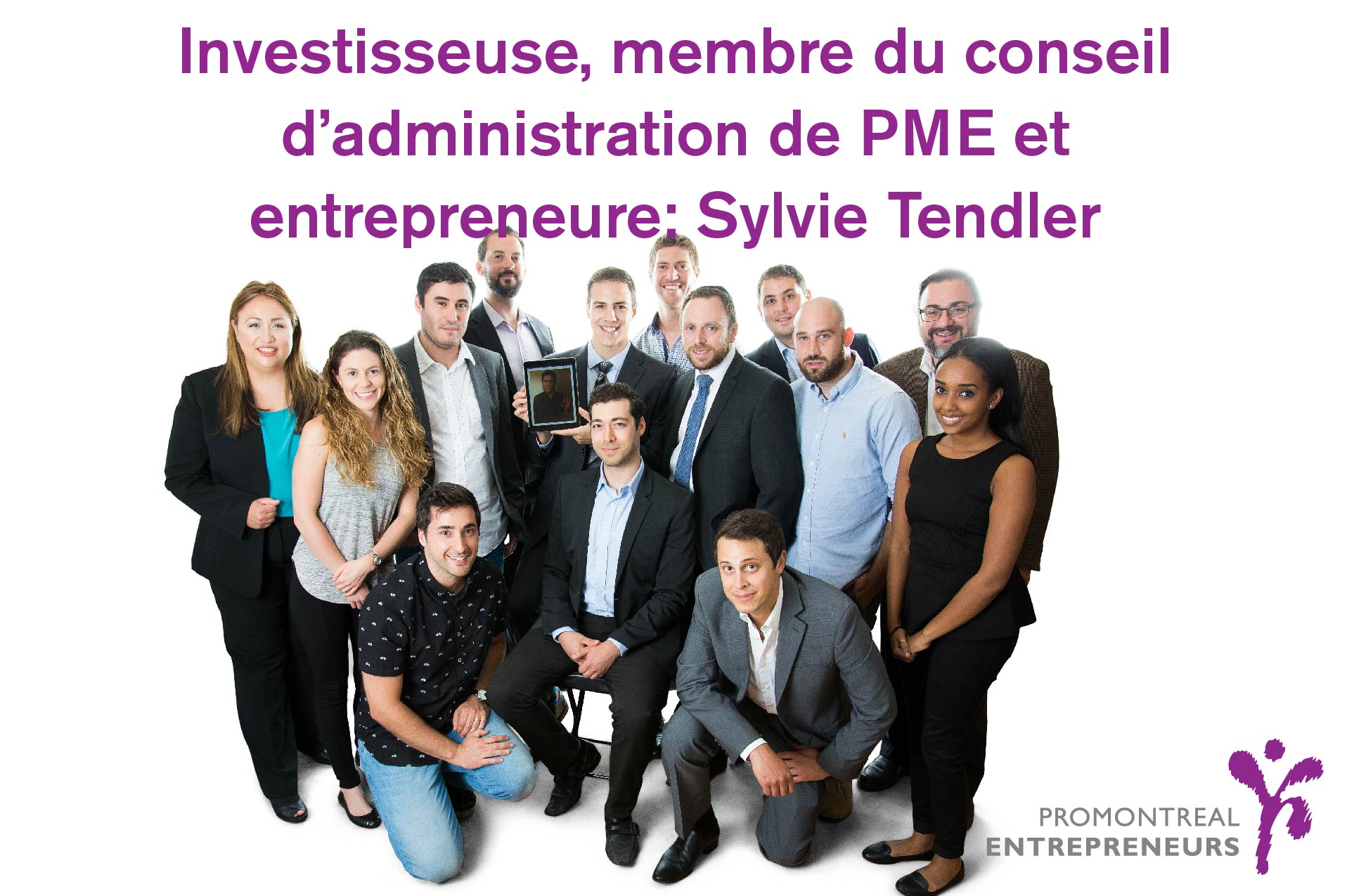 La relation entre Sylvie Tendler et PME (ProMontréal Entrepreneurs) a débuté en 2002, lorsque son entreprise, Groupe Tendler, a reçu du financement. Après plusieurs années de succès et après la vente de son entreprise, Sylvie est maintenant membre de notre conseil d’administration. Sylvie a des renseignements précieux à partager au sujet de l’écosystème montréalais. Par ailleurs, si vous vous êtes déjà demandé ce que les investisseurs recherchent dans une présentation de 15 minutes, cette entrevue vous offrira une perspective remarquable.
La relation entre Sylvie Tendler et PME (ProMontréal Entrepreneurs) a débuté en 2002, lorsque son entreprise, Groupe Tendler, a reçu du financement. Après plusieurs années de succès et après la vente de son entreprise, Sylvie est maintenant membre de notre conseil d’administration. Sylvie a des renseignements précieux à partager au sujet de l’écosystème montréalais. Par ailleurs, si vous vous êtes déjà demandé ce que les investisseurs recherchent dans une présentation de 15 minutes, cette entrevue vous offrira une perspective remarquable.
Q: Vous avez une relation de longue date avec PME. Quelles sortes de changements avez-vous remarqués dans le programme depuis le début de votre relation?
R: Je connais les points de vue des deux camps. J’étais dans le programme en 2002 alors que j’étais prestataire. Dans ce temps-là, une fois que vous aviez reçu le financement, vous faisiez tout simplement vos paiements mensuels directement à PME, et ça finissait là. Maintenant, le programme offre tellement plus de ressources. Que vous cherchiez du mentorat ou du soutien financier, vous y trouvez vraiment un centre multiservice pour entrepreneur. Lorsque vous démarrez une entreprise, il se peut que faute de ressources financières, il soit difficile de se procurer les services d’un comptable, d’un avocat ou d’un conseiller stratégique.
Actuellement, dans le programme, on vous attribue un mentor dans votre domaine et dans votre région. Cet individu est prêt à travailler avec vous et à vous conseiller gratuitement. Tout ce qui l’intéresse, c’est de vous voir réussir. Le programme vous aide aussi à trouver des capitaux supplémentaires ailleurs; que ce soit à partir de concours provinciaux, de fonds de capital de risque ou de subventions. Katherine, la responsable du programme, obtient pour les entrepreneurs les prêts et le financement supplémentaires dont ils ont besoin. Quand vous démarrez en affaires, l’argent peut être serré. Vous essayez également de prendre des décisions sans trop tenir compte des pressions financières. Avec PME l’entrepreneur peut bénéficier de ce coussin financier supplémentaire.
Q: De quelle façon le programme PME a-t-il contribué à l’écosystème des entreprises en démarrage de Montréal dans le passé, et maintenant?
R: Le but du programme, au départ, en 2001, était d’encourager les jeunes adultes juifs à rester à Montréal durant ce qu’on appelait «l’exode des cerveaux». Il y a eu une période où les jeunes juifs, surtout de langue anglaise, se sont mis à quitter Montréal pour aller habiter à Toronto, à Vancouver ou aux États-Unis. Par exemple, parmi les jeunes de ma classe de dernière année d’école secondaire à Herzliah, 75 %, voire 80 %, de mes camarades de classe n’habitent plus à Montréal. Quand les gens partent, ils prennent leur argent, leurs compétences et leur savoir-faire. Ainsi lorsque Stephen Bronfman et Jimmy Alexander ont décidé d’unir leurs efforts, leur but était d’offrir aux jeunes adultes juifs la possibilité de créer leur propre destin et entreprise tout en les encourageant à rester dans la province.
Le deuxième objectif était la création d’emplois par ces entrepreneurs. Par exemple, quand j’ai démarré mon entreprise, j’étais seule pour la faire fonctionner. Lorsque j’ai vendu, nous étions plus de 15 personnes. Il y a donc eu un effet d’entraînement — initialement, c’était pour encourager les jeunes adultes de Montréal, et ensuite, parce qu’au fil des ans, les gens quittaient moins la province dans la même mesure, les efforts se sont concentrés sur la création d’entreprises prospères. Il s’agit de créer un environnement où les gens peuvent prospérer.
On peut mettre la politique de côté, mais le Québec a quand même ses nuances. Si nous ne créons pas nos propres emplois, nous avons un problème. Lorsque les conseils d’administration se rencontrent pour décider où installer leur administration centrale, nous (Québec) nous retrouvons rarement sur la liste restreinte. Nous devons créer nos propres emplois, et heureusement, le gouvernement du Québec est très sympathique envers l’entrepreneuriat.
Q: Quand vous avez fondé votre entreprise, qu’est-ce qui vous a le plus surpris à propos de l’environnement entrepreneurial du Québec?
R: Dans mon cas, à partir du moment où j’ai fondé le concept de ma société à celui où elle était enregistrée, il a fallu à peine 2 semaines. Dans d’autres pays, ça peut prendre des années. En 2 semaines, je dirigeais officiellement une entreprise. Le Québec offre un environnement extraordinaire où le soutien pour les jeunes est incroyable, et PME fait un excellent travail.



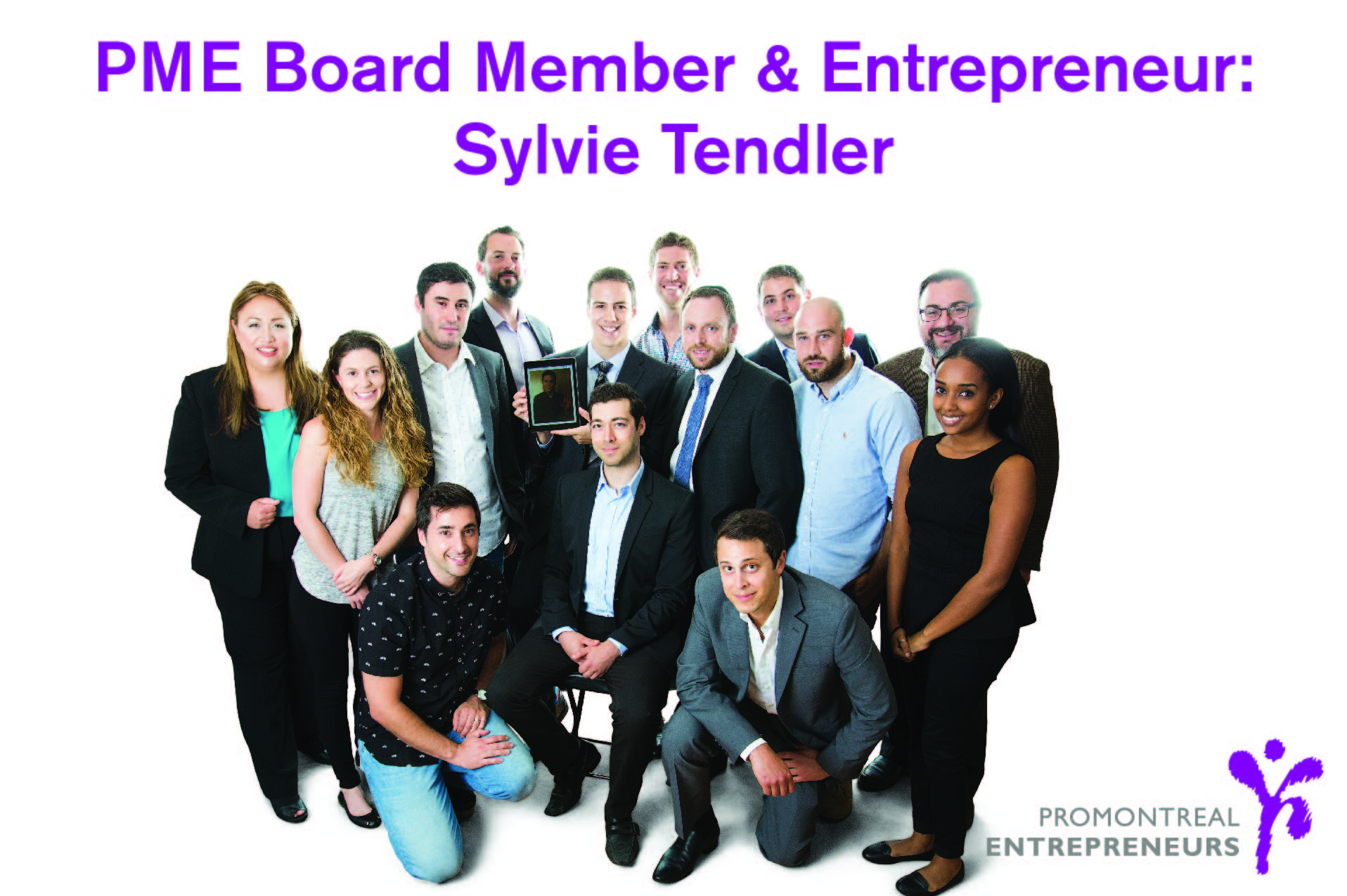 Sylvie Tendler relationship with PME (ProMontreal Entrepreneurs) started back in 2002 when her business, The Tendler Group, was funded. After many years of success and selling her company, she now sits at our Board of Directors. Sylvie has some valuable insight to share about the Montreal eco-system. Also, if you ever wondered what investors are looking for in a 15 minute pitch, this interview will give you great perspective.
Sylvie Tendler relationship with PME (ProMontreal Entrepreneurs) started back in 2002 when her business, The Tendler Group, was funded. After many years of success and selling her company, she now sits at our Board of Directors. Sylvie has some valuable insight to share about the Montreal eco-system. Also, if you ever wondered what investors are looking for in a 15 minute pitch, this interview will give you great perspective.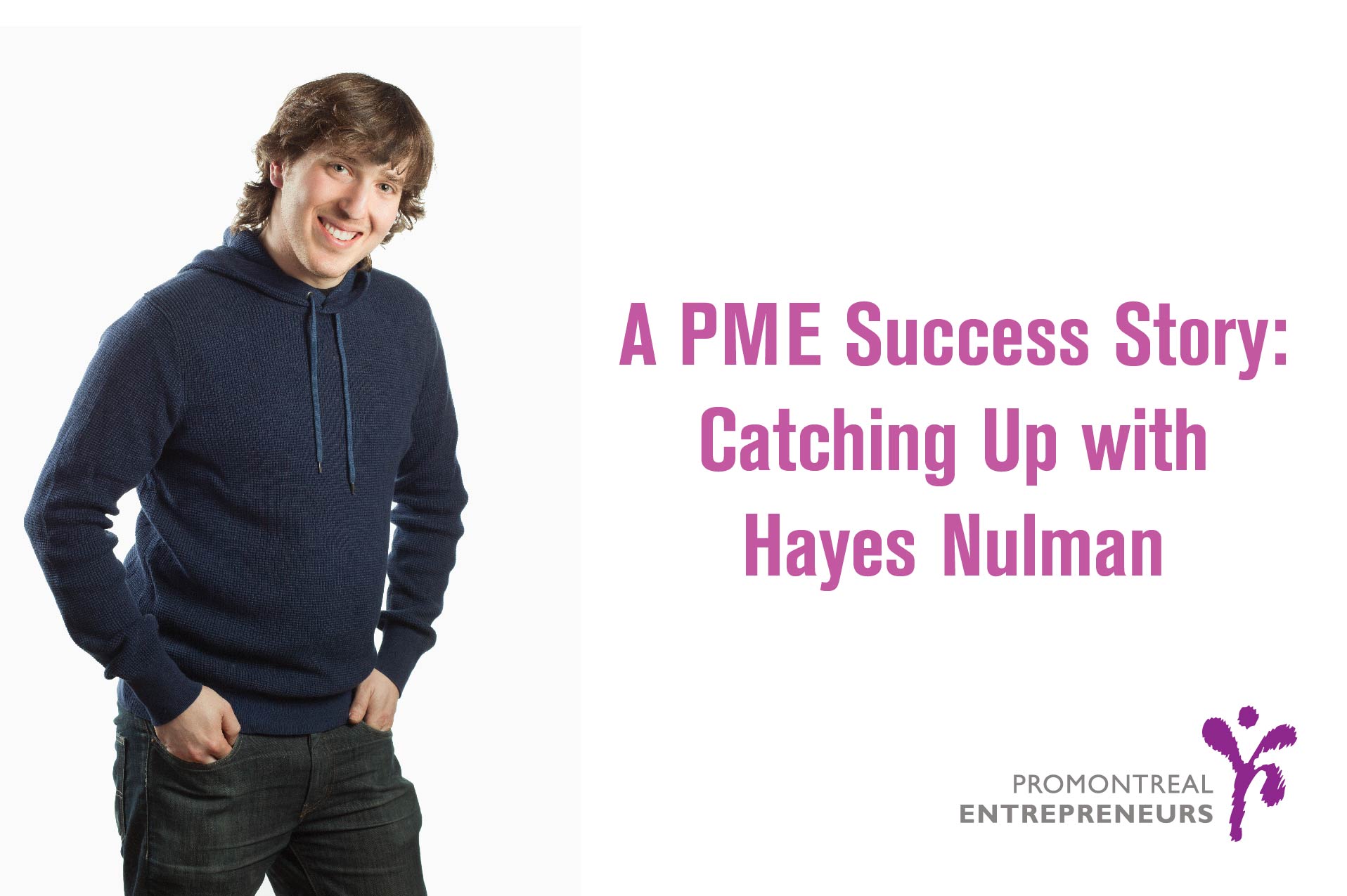 Hayes was part of PME’s 2014 funding round. Still heading operations of his business,
Hayes was part of PME’s 2014 funding round. Still heading operations of his business, 
 Some of the world`s most successful entrepreneurs started their businesses while still university students.
Some of the world`s most successful entrepreneurs started their businesses while still university students.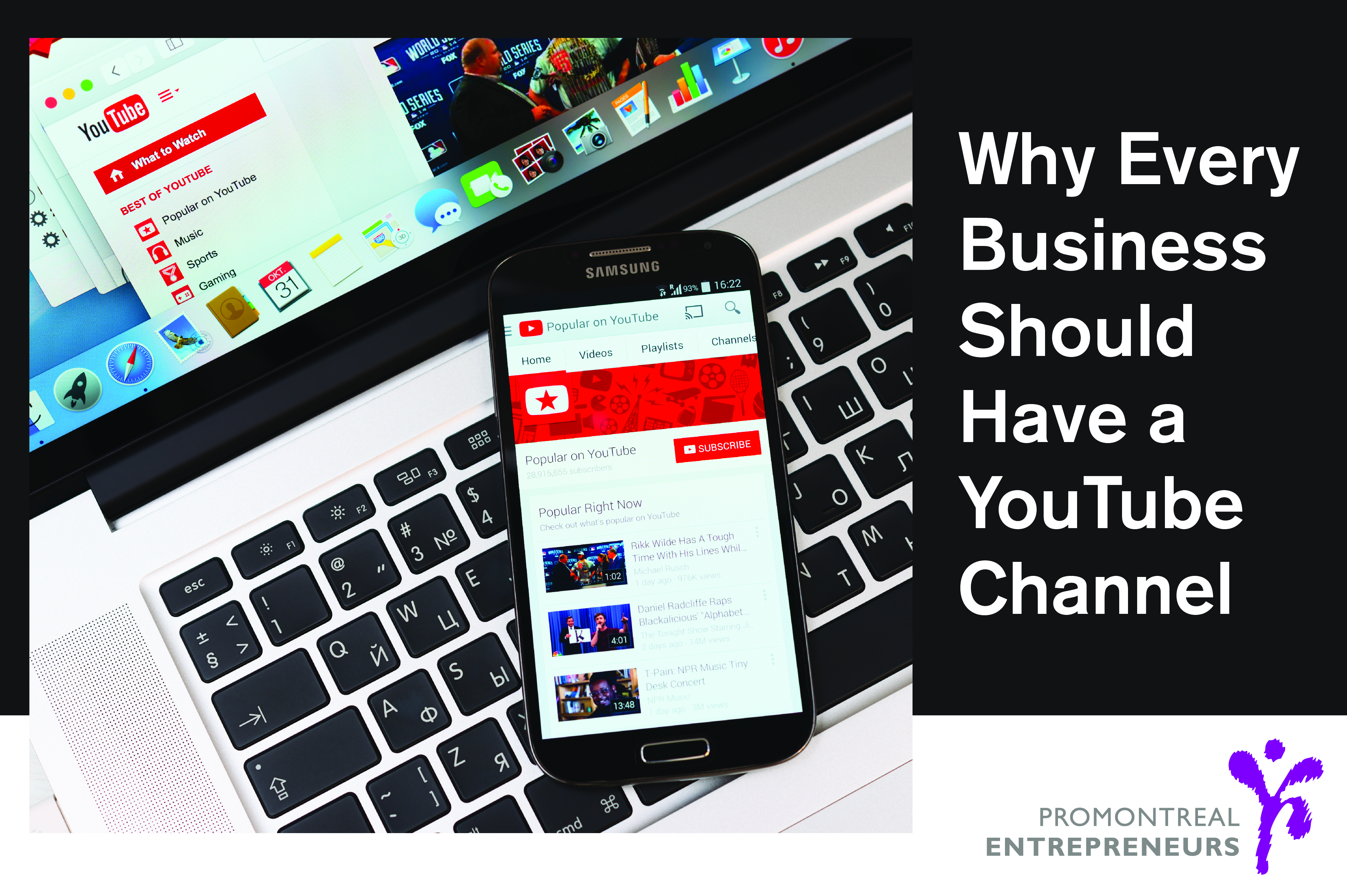 The medium is the message and YouTube is that medium. Marshall McLuhan hit the nail on the head with that one. Most times, it’s not about the content you create. It’s how you choose to spread it that makes the difference.
The medium is the message and YouTube is that medium. Marshall McLuhan hit the nail on the head with that one. Most times, it’s not about the content you create. It’s how you choose to spread it that makes the difference.
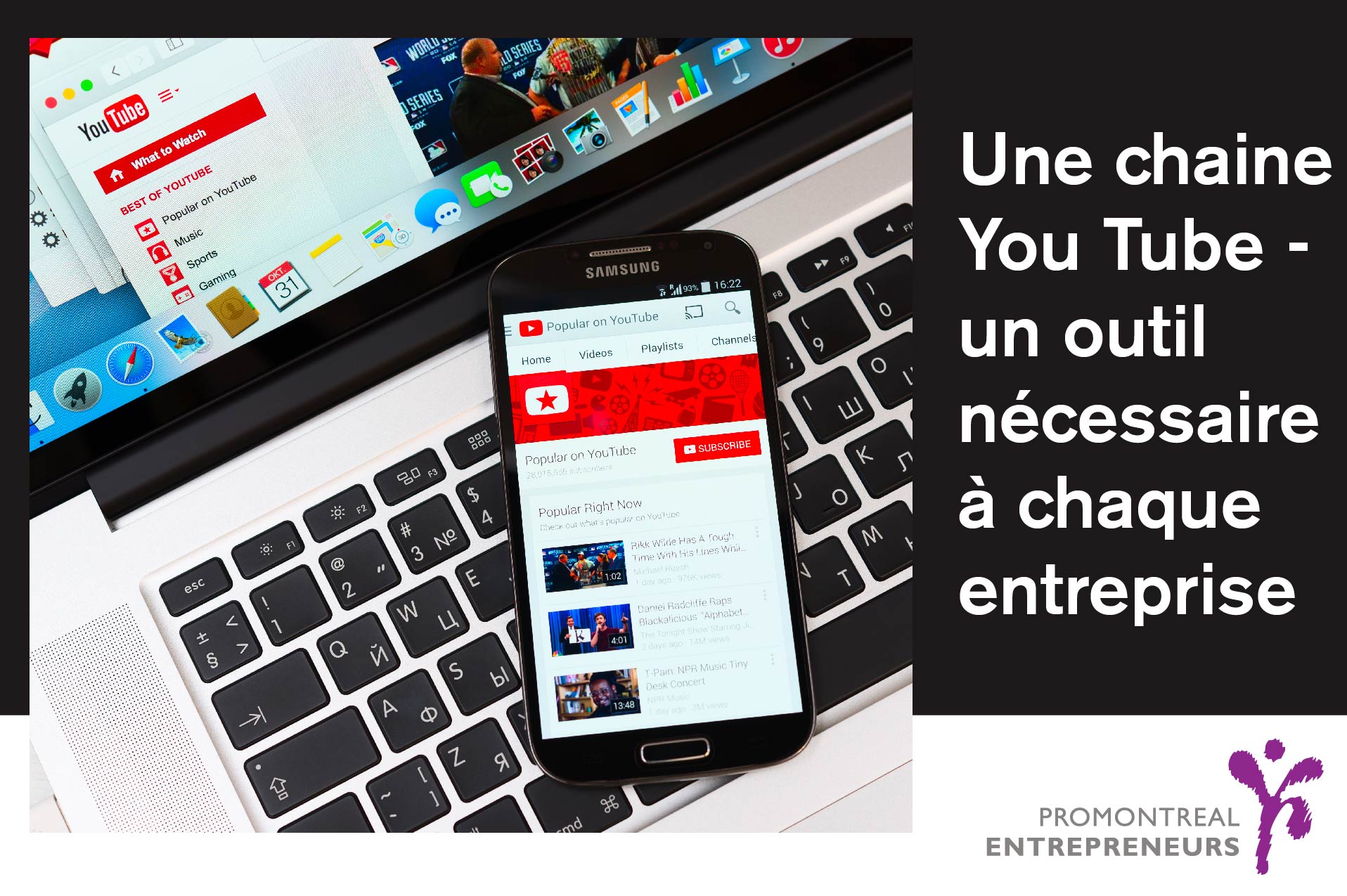 «Le message, c’est le médium». La phrase célèbre de Marshall McLuhan ne pourrait viser plus juste. La plupart du temps, ce n’est pas le contenu que vous créez qui fait la différence, c’est plutôt la façon dont vous choisissez de le diffuser. Par exemple, un concept qui peut sembler médiocre sous forme de publicité imprimée peut résonner brillamment sur film. De nos jours, les vidéos publiées sur YouTube sont incontestablement le meilleur moyen de propager votre message. En plus de sa vaste portée et de sa capacité d’augmenter considérablement le
«Le message, c’est le médium». La phrase célèbre de Marshall McLuhan ne pourrait viser plus juste. La plupart du temps, ce n’est pas le contenu que vous créez qui fait la différence, c’est plutôt la façon dont vous choisissez de le diffuser. Par exemple, un concept qui peut sembler médiocre sous forme de publicité imprimée peut résonner brillamment sur film. De nos jours, les vidéos publiées sur YouTube sont incontestablement le meilleur moyen de propager votre message. En plus de sa vaste portée et de sa capacité d’augmenter considérablement le As the saying goes, you never get a second chance to make a
As the saying goes, you never get a second chance to make a 